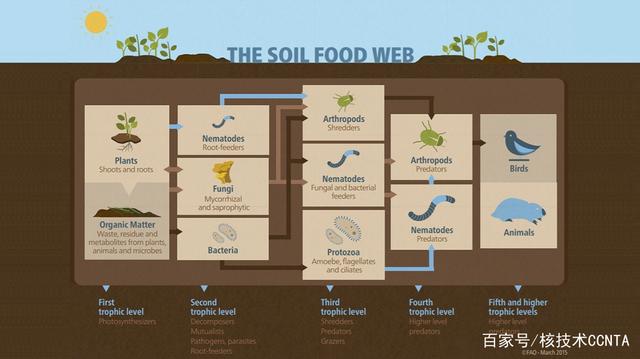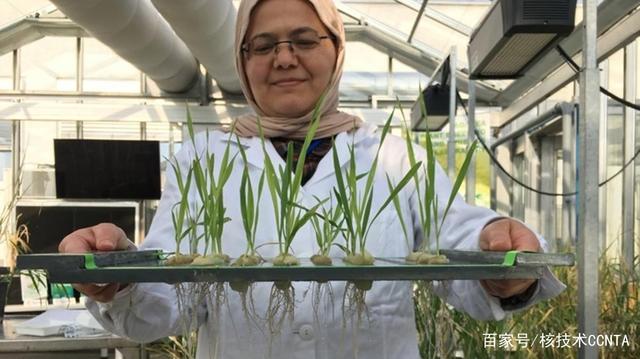The International Atomic Energy Agency (IAEA) cooperates with the food and Agriculture Organization of the United Nations (FAO) to promote soil, plant and animal biodiversity, while supporting countries around the world to use nuclear and related technologies to achieve their strategic objectives of food security, sustainable agricultural development and ecosystem services.
According to a report released last year by the Intergovernmental platform for biodiversity and ecosystem services (ipbes), about 1 million species of plants and animals are threatened with extinction, many of which will disappear within a few decades.
Soil degradation and invasive species are important factors for biodiversity reduction. Over the past few decades, the FAO / IAEA laboratory in sebersdorf, Austria, has developed and validated various isotope and nuclear technologies to improve soil quality and management, mitigate the impact of invasive species on the environment and support plant and plant breeding. Animals with good genetic composition can better resist climate change and diseases. Through its technical cooperation programme and coordinated research projects with partner agencies, the agency transfers these technologies to scientists, technicians and practitioners around the world.
Soil management
Soil is a thin layer on the earth that accounts for one fourth of the earth's biodiversity. It is the most diverse habitat for microbes and macroorganisms, such as bacteria, fungi, nematodes, vertebrates, invertebrates, which interact and promote the global cycle that makes all life possible. These natural interactions have a positive impact on food safety and security, animal and human health, water purification, and mitigation and adaptation to climate change, and are free of charge. They consolidate the health of natural ecosystems and their ability to provide the basis for our lives.
"Unfortunately, through climate change, intensive agriculture, deforestation and industrial activities, our soil is being degraded and destroyed faster than they can be developed and replenished," said Lee Heng, director of the soil, water management and crop nutrition branch of the Joint FAO / IAEA food and agriculture nuclear technology division.
Scientific data are needed in order to enable countries to formulate better strategies to deal with soil erosion and protect soil microbial communities. To this end, the FAO / IAEA soil management laboratory is studying how to link the diversity and structure of bacterial and fungal communities in soils with soil quality and soil erosion. This needs to be determined with carbon, nitrogen and P (13 C, 15 N and 239 + 240 PU) isotopes.


Soil microbes and macro organisms regulate greenhouse gas emissions by increasing carbon sequestration, thus combating global warming. To support their actions and help countries develop climate smart agricultural practices for carbon sequestration, the International Atomic Energy Agency (IAEA) and FAO recently launched a five-year coordinated research project on the use of carbon and nitrogen isotopes to quantify greenhouse gas emissions, with researchers from Argentina, Bangladesh, Brazil, China, Costa Rica and Ethiopia Asia, Germany, India, New Zealand, Pakistan, Spain and Vietnam.
Bacteria also play a key role in plant growth. In Benin, for example, more than 5000 farmers have been trained to inoculate their legumes with bacteria to promote their ability to capture nitrogen (plant fertilizer) from the atmosphere. Nitrogen 15 (15N) isotope technology is used to identify legumes with high nitrogen fixation capacity and quantify the amount of nitrogen captured by these legumes. As a result, farmers benefit from increased yields of legumes and cereal crops, while saving fertilizer.
Improving genetic diversity of animals and plants
According to the ipbes 2020 report, despite local efforts, local domesticated animal and plant species and species are disappearing globally. "The loss of diversity, including genetic diversity, undermines the resilience of many agricultural systems to threats such as pests, pathogens and climate change, posing a serious threat to global food security," the report said.
Established 25 years ago, the FAO / IAEA plant breeding and genetics laboratory has worked with thousands of scientists around the world to develop improved plant varieties for major crops, underutilized and indigenous crops. For example, high yield sorghum and cowbeans, banana resistant to major fungal diseases, drought tolerant peanut varieties and so on. They were developed by seed irradiation, so new strains with excellent properties can be selected.
"Our work in plant mutation breeding helps countries improve existing crop varieties by introducing new genetic diversity, providing better and stable yields under existing and changing environmental challenges, including climate change," said Shoba sivasankar, head of plant breeding and genetics. "In this sense, we are introducing new 'genetic' diversity, which will not crowd out local biodiversity, as it focuses on improving farmland where existing crop varieties are being improved."

Habibah al menaia of the Kuwait Institute of Sciences (kisr) participated in the barley mutation breeding scholarship project at the FAO / IAEA plant breeding and genetics laboratory in sebersdorf, Austria.
The agency also provides support to countries in the field of animal reproduction and breeding through the development of protocols and guidelines that will help characterize livestock biodiversity and make more sustainable use of it. It provides services to animal genetics laboratories and livestock professionals, including training in the application of nuclear and nuclear related genotyping techniques to identify environmentally adapted varieties with excellent genetic composition to tolerate climate change (e.g., draught tolerance) or to reduce susceptibility to emerging or re emergence. Emerging animal diseases to improve farmers' livelihoods.
Reducing the impact of invasive species on ecosystems
"Due to the loss of global biodiversity, the impact of invasive species is second only to the destruction of natural habitats. They can disrupt ecosystem services or destroy entire ecosystems, and lead to the reduction of many native species now listed as endangered or threatened. " This is a report from the FAO / IAEA joint Department of entomologist Walser enklin.
Using a nuclear technology called sterile insect technology (SIT), IAEA and FAO have helped countries rid themselves of invasive species such as the Mediterranean fruit fly in the Dominican Republic. When released in the field, sterile insects will mate with wild insects of the same species, so they will not produce offspring, resulting in a decrease in the number of pests over time. As a recent eight-year study on the tsetse fly in Senegal shows, the technology reduces pesticide use and protects biodiversity. Therefore, controlling invasive pests supports not only agriculture but also biodiversity.
"The use of nuclear technology is very diverse - most people don't associate it with conservation of biodiversity," enkerlin said. "But it does, and it works all over the world."